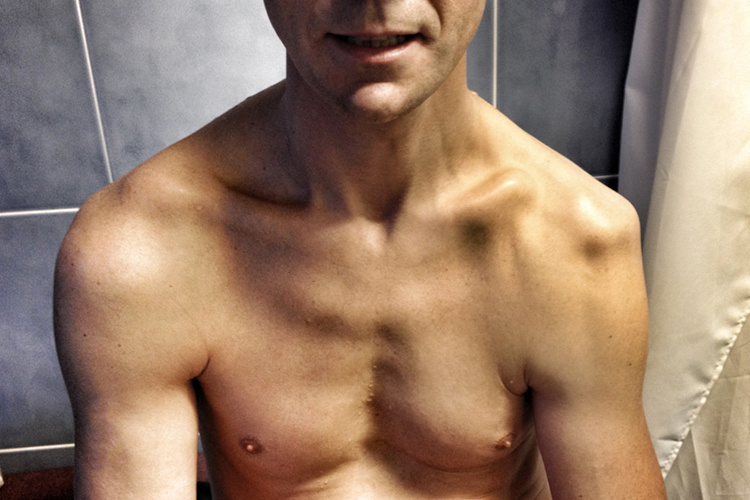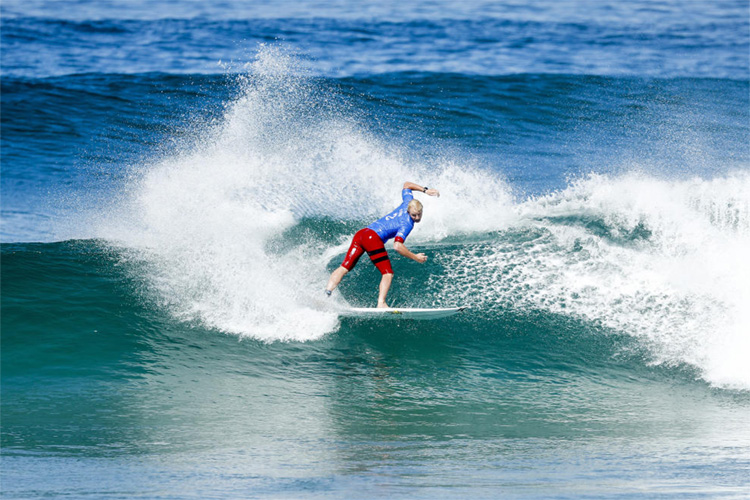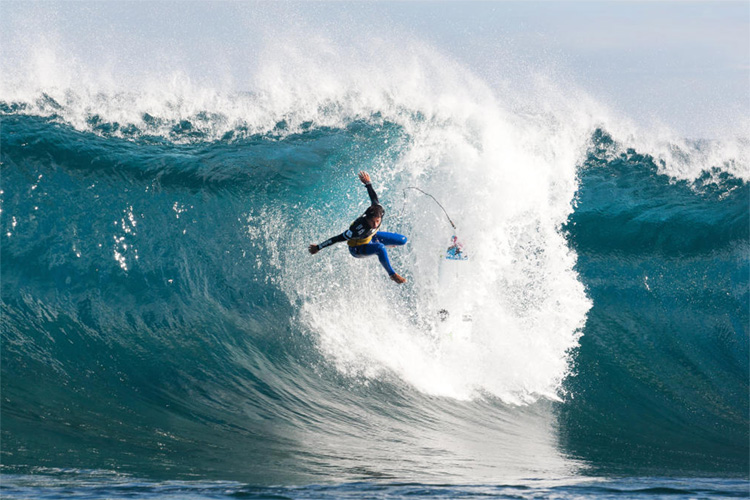Dislocated shoulders are very common among young and adult surfers.
Surfers are continually using their arms and upper body for paddling, duck diving, taking off, maneuvering, and adjusting to the wave flow.
As a result, their lower back and shoulders are under constant pressure. Injuries occur when the thin rotator cuff is torn or overstretched, for example, when you're surfing for a couple of hours non-stop or wiping out.
Constant paddling strokes result in wear and tear on your shoulders.
From a technical perspective, what happens is that the supraspinatus tendon gets impinged, which often leads to tendinitis and inflammation.
The more you surf with an inflamed shoulder, the worse it gets. Eventually, the tendon will break down, and you'll begin to feel pain at the top and front of your shoulder.
Dislocated shoulders occur when the arm is overhead, rotated outward, and forced backward. When compared to the good shoulder, the injured one will display a small protuberance or bump.
A dislocated shoulder may result in fractures, but in most cases, it can be fixed - reduced - relatively easily.
It can happen to you or a surfer friend in more or less remote locations. In the worst-case scenario, the injury will not allow you to swim back to shore.
A dislocated shoulder hurts badly. It is generally associated with acute and localized pain and should be fixed as soon as possible.

Non-Medical Techniques for Reducing a Dislocated Shoulder
The good news is that there are several non-medical techniques to put your shoulder back into its original place, which will provide significant pain relief to the patient in a matter of minutes.
Unless there's a fracture, putting a dislocated shoulder back in place has multiple advantages and may even prevent injuries to nerves and blood vessels.
There are several shoulder dislocation recovery methods.
The most used techniques are the Stimson technique (scapular rotation maneuver) and the Cunningham technique.
But the external rotation, the Milch method, the Spaso technique, and the traction-countertraction process will also solve the problem.
There is only one goal: to get the articulation back into place. And for that, it is paramount that the patient relaxes the muscles and cooperates with the procedure.

The Stimson Technique
One of the most popular ways of fixing a dislocated shoulder is performing the Stimson technique:
- Position the patient facing down on an elevated surface like a bed, table, or sofa;
- Let the injured arm hang down over the edge of the surface without touching the ground;
- If available, have the patient take pain medication (ibuprofen) or muscle relaxants (baclofen or chlorzoxazone);
- Attach a five-to-ten-pound object to the patient's swinging wrist or ask an assistant to pull his/her hand downward gently;
- Start massaging the shoulder muscles in order to relax them and reduce spasms;
- Slowly push the shoulder blade toward the spine using your fingers;
- When you hear a clunk, the shoulder is back in place;
If the person is able to touch the good shoulder with the hands of the injured side, it's all good. Remember that this process can take up to a couple of hours.
The Cunningham Technique
There's also another way of reducing a dislocated shoulder. It's called the Cunningham technique:
- Sit the patient straight in a chair with his/her elbow bent at 90 degrees next to his body;
- Tell him/her to take some deep breaths and relax;
- Start massaging the trapezius muscles, move to the deltoid, and then to the biceps;
- Keep correcting the patient's position: "Sit up straight and arch your back";
- When you hear a pop, the shoulder is back in place;
The Boss-Holzach-Matter Technique
Finally, note that there's a self-assisted dislocated shoulder reduction method called the Boss-Holzach-Matter technique.
It can be as fast and effective as a physician-administered technique. Here's how to do it:
- Sit on a bed with the leg of the good side outside the bed;
- Bend the knee of the injured shoulder side;
- Hold your hands together in front of the knee of the injured side;
- Keep the arms as close to the thighs as possible;
- Start leaning your head back slowly and relax;
- Gradually extend the arms and the neck;
- Repeat the previous step until the shoulder gets back to its original place;
After suffering a shoulder dislocation, you might need physical rehab, so consult a doctor before getting back to the water.
